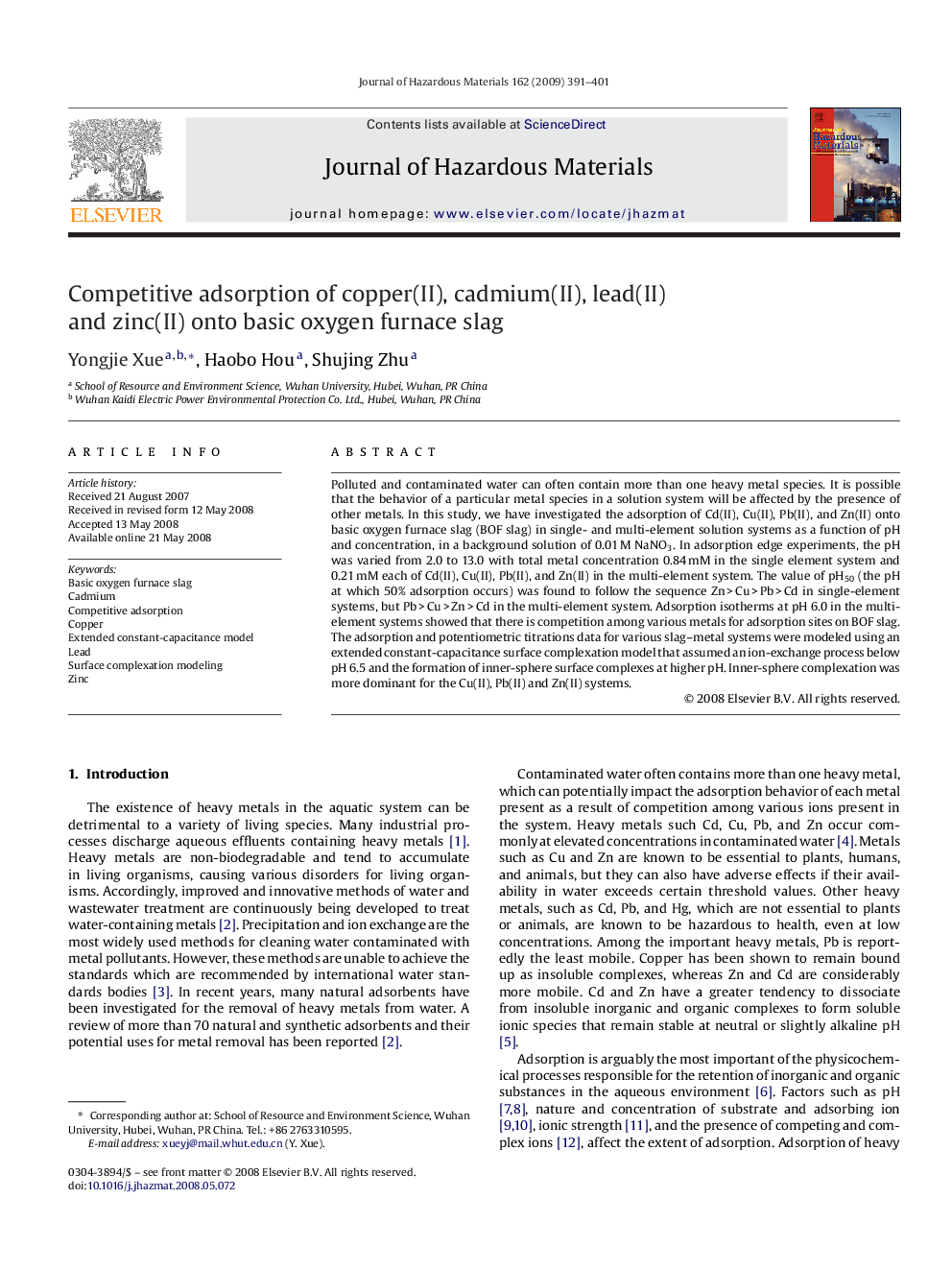| Article ID | Journal | Published Year | Pages | File Type |
|---|---|---|---|---|
| 582589 | Journal of Hazardous Materials | 2009 | 11 Pages |
Abstract
Polluted and contaminated water can often contain more than one heavy metal species. It is possible that the behavior of a particular metal species in a solution system will be affected by the presence of other metals. In this study, we have investigated the adsorption of Cd(II), Cu(II), Pb(II), and Zn(II) onto basic oxygen furnace slag (BOF slag) in single- and multi-element solution systems as a function of pH and concentration, in a background solution of 0.01 M NaNO3. In adsorption edge experiments, the pH was varied from 2.0 to 13.0 with total metal concentration 0.84 mM in the single element system and 0.21 mM each of Cd(II), Cu(II), Pb(II), and Zn(II) in the multi-element system. The value of pH50 (the pH at which 50% adsorption occurs) was found to follow the sequence Zn > Cu > Pb > Cd in single-element systems, but Pb > Cu > Zn > Cd in the multi-element system. Adsorption isotherms at pH 6.0 in the multi-element systems showed that there is competition among various metals for adsorption sites on BOF slag. The adsorption and potentiometric titrations data for various slag-metal systems were modeled using an extended constant-capacitance surface complexation model that assumed an ion-exchange process below pH 6.5 and the formation of inner-sphere surface complexes at higher pH. Inner-sphere complexation was more dominant for the Cu(II), Pb(II) and Zn(II) systems.
Keywords
Related Topics
Physical Sciences and Engineering
Chemical Engineering
Chemical Health and Safety
Authors
Yongjie Xue, Haobo Hou, Shujing Zhu,
